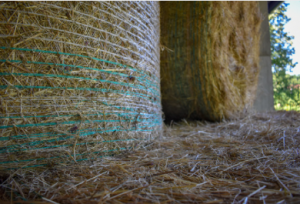Baling twines are one of the most commonly used woodworking machine tools. They are made of a hardwood core and covered with a synthetic polyethylene or polypropylene cover. Baling twines, or baling twine, is simply thin, fine-threaded sisal or nylon string used to bind a measured amount of fibre material together in a more durable and easier-to-fold and tighten shape. The core of the baling twine can be made of a variety of materials, from bamboo to plastic to synthetic material. Twine manufacturers and suppliers offer a large variety of core materials that will meet the needs of any home improvement project. Depending on the size and strength of the project, the diameter of the basting twines will vary.
 The major uses of the baling twine are to securely fasten materials such as carpet runners, upholstery fabric, leather straps, and even paper-thin sheets of plywood or cardboard. In addition, a simple roll of baling twine can be used to secure bungee cords to various support systems, including light poles and roof rafters. It also prevents the possibility of the baling twine being pulled loose and falling to the ground. When using a bale of baling twine, if the project calls for a tight and secure hold, using a larger bale is usually the best solution.
The major uses of the baling twine are to securely fasten materials such as carpet runners, upholstery fabric, leather straps, and even paper-thin sheets of plywood or cardboard. In addition, a simple roll of baling twine can be used to secure bungee cords to various support systems, including light poles and roof rafters. It also prevents the possibility of the baling twine being pulled loose and falling to the ground. When using a bale of baling twine, if the project calls for a tight and secure hold, using a larger bale is usually the best solution.
There are two types of baling twine available. One type is constructed from tightly wound bales of synthetic polyethylene or polypropylene fibres that can be wound tightly around a core material to produce a tight and secure bale. The core material can be made of almost any synthetic fibre, such as polyester or nylon. The second type of baling twine consists of hollow strands of cotton with a strong plastic coating so that the bales can be securely woven together without leaking.
To use the baling twine, you first need to unwind the material from the shears, cut the baling twine to desired lengths, and secure them together with duct tape. Next, place the bales in a location where they will be exposed to the sun for prolonged periods. Although baling twine can withstand almost any amount of heat, particularly if the material is wound tightly, it should always be placed in an area where it can receive indirect sunlight during the day.
If the baling twine is located in a sheltered area, such as a hay net, direct sunlight is another issue, so care should be taken to place the bales in a location where indirect sunlight can be received. Hay bales provide a great source of cover for animals, especially horses, and should not be exposed to temperatures that would cause damage. If the bales are placed in an area where they could be exposed to direct sunlight, the hay bales should be stored in a cool, dry location until the season ends.